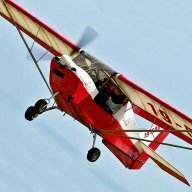-
Posts
3,060 -
Joined
-
Last visited
-
Days Won
69

Garfly replied to kgwilson's topic in Aircraft Incidents and Accidents



Garfly replied to BrendAn's topic in Student Pilot & Further Learning

Garfly replied to BrendAn's topic in Student Pilot & Further Learning

Garfly replied to BrendAn's topic in Student Pilot & Further Learning

Garfly replied to BrendAn's topic in Student Pilot & Further Learning

Garfly replied to BrendAn's topic in Student Pilot & Further Learning

Garfly replied to BrendAn's topic in Student Pilot & Further Learning

Garfly replied to BrendAn's topic in Student Pilot & Further Learning

Garfly replied to BrendAn's topic in Student Pilot & Further Learning

Garfly replied to BrendAn's topic in Student Pilot & Further Learning

Garfly replied to BrendAn's topic in Student Pilot & Further Learning

Garfly replied to BrendAn's topic in Student Pilot & Further Learning

